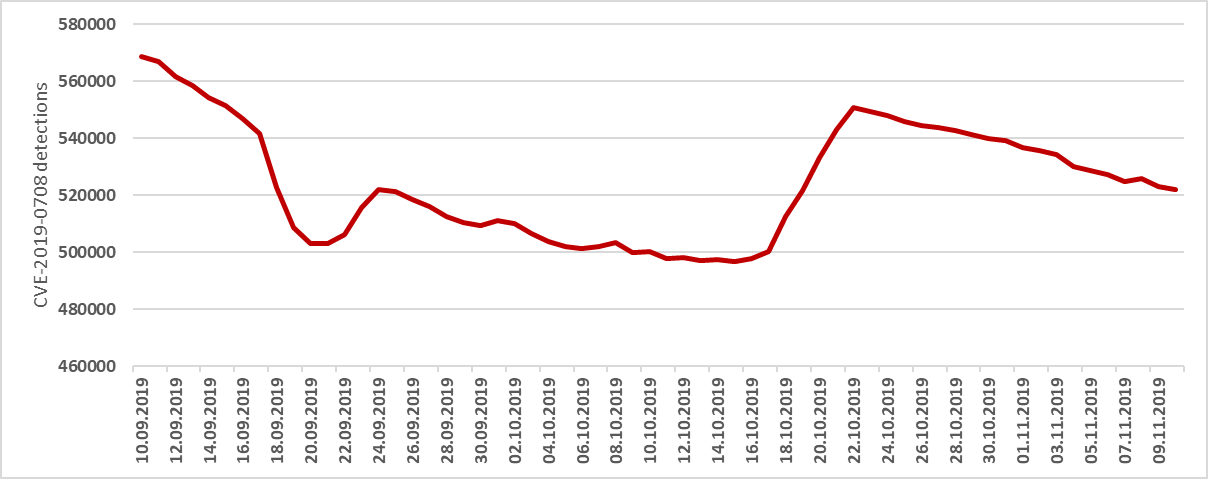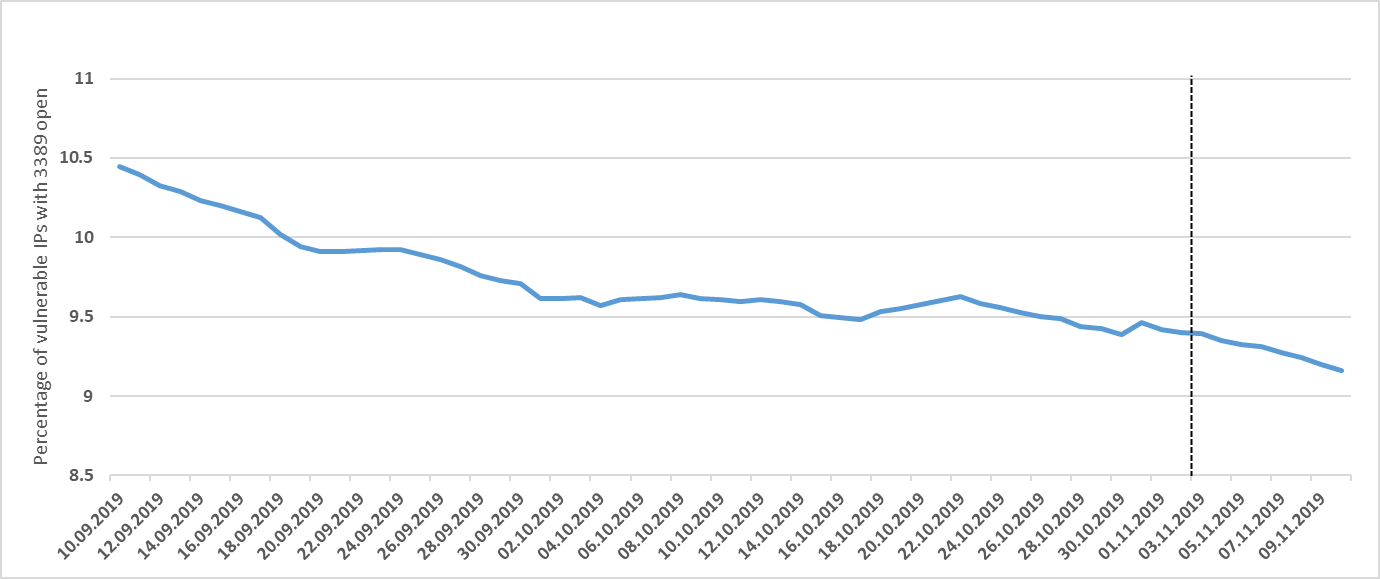Did the recent malicious BlueKeep campaign have any positive impact when it comes to patching?
After a news of "mass exploitation" of a specific vulnerability hits mainstream media, even organizations that don’t have a formal (or any) patch management process in place usually start to smell the ashes and try to quickly apply the relevant patches. Since media coverage of the recent BlueKeep campaign was quite extensive, I wondered whether the number of vulnerable machines would start diminishing significantly as a result.
BlueKeep[1] has been with us for a while now. And although pretty much everyone in the security community expected/expects to see the vulnerability used to spread a worm (as it was with WannaCry and EternalBlue), this hasn’t happened so far. However on November 2nd, information about a – potentially significant – BlueKeep exploitation campaign was published[2], which at first seemed to indicate that just such a worm might be loose in the wild[3]. Although it turned out not to be a self-spreading malware, but a campaign in which the attackers used the Metasploit BlueKeep exploit (or an exploit similar to that one), many news sources reported on the attacks which managed to bring the vulnerability to the spotlight again. A question occurred to me at that point – was this scare enough to push those who still didn’t apply the patches to do so now?
Although without being able to directly scan all the potentially vulnerable machines in existence it is hard to say whether the media coverage had any definitive impact when it comes to patching, we can get some idea about the state of affairs before and after the campaign from Shodan. Or – to be exact – from data gathered from it over time. Since Shodan can identify some vulnerabilities (including CVE-CVE-2019-0708/BlueKeep) in the systems it scans, determining how many BlueKeep vulnerable systems are connected to the internet[4] at any time should be quite straight-forward. However given the way Shodan works, this is not completely true.
Shodan scans different IP ranges over time in batches, which is why there may be significant peaks (lots of "new" vulnerable systems/systems with open ports in a scanned IP range) or valleys (lots of systems previously detected as vulnerable have been patched/their ports have been closed) in the data. Due to this behavior of Shodan, if we take a look at a chart of the number of detected BlueKeep vulnerable systems over the last two months, the results wouldn’t tell us much.

Luckily, with little context, we can make a bit more sense of the data. Although getting an exact absolute number of vulnerable systems is impossible, we can compare the number of vulnerable systems with the number of all systems responding on port 3389 and get an approximate percentage of actually vulnerable/unpatched systems connected to the internet when compared to all potentially vulnerable systems connected to the internet. Although this is still far from exact, it can give us a much better idea of the state of affairs, as the following chart shows. It should be mentioned at this point that percentages of vulnerable systems vary widely across different countries[5].

As we may see, the percentage of vulnerable systems seems to be falling more or less steadily for the last couple of months and it appears that media coverage of the recent campaign didn’t do much to help it. And since there still appear to be hundreds of thousands of vulnerable systems out there, we have to hope that the worm everyone expects doesn’t arrive any time soon…
[1] https://en.wikipedia.org/wiki/BlueKeep
[2] https://doublepulsar.com/bluekeep-exploitation-activity-seen-in-the-wild-bd6ee6e599a6
[3] https://twitter.com/MalwareTechBlog/status/1190730471321112577
[4] https://untrustednetwork.net/en/2019/08/01/where-are-all-the-machines-affected-by-bluekeep-hiding/
[5] https://www.untrustednetwork.net/en/2019/08/10/where-are-all-the-machines-affected-by-bluekeep-hiding-part-2/


Comments